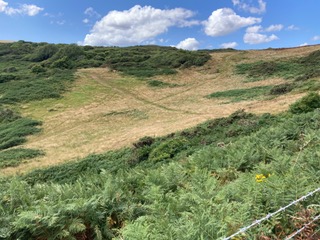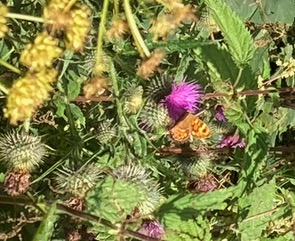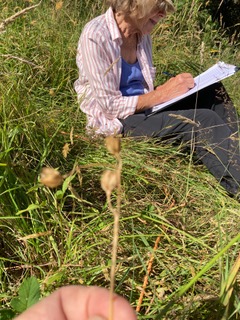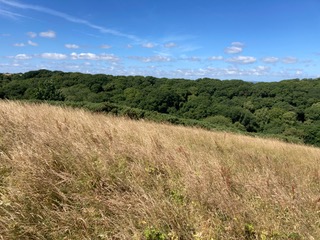 Do You Want to Know Where the Wild Grasslands on the Roseland Are?
Do You Want to Know Where the Wild Grasslands on the Roseland Are?
So did we. So a group of us, under the guidance of Wild Roseland, got together to find out where some of them were.
We received training to help us identify the flowers and grasses that would indicate whether or not the habitat we were looking at was unimproved grassland.
We then found out where unimproved grasslands on the Roseland had been identified in 2005 and went out to find them.
 From river to shore, hilltop to valley bottom, the landscape we live in on the Roseland is a product of centuries of human activity; but there are places to be found where that impact is minimal and wild flora and fauna abound. Unimproved grassland habitats are some of those places
From river to shore, hilltop to valley bottom, the landscape we live in on the Roseland is a product of centuries of human activity; but there are places to be found where that impact is minimal and wild flora and fauna abound. Unimproved grassland habitats are some of those places
Unimproved grassland is a dynamic habitat and if you do nothing to it, nature will take its course and the grassland will move through various stages of change towards scrub and woodland habitats.
Whilst all habitats are of some wildlife value, not all offer the unique grassland and wildflower diversity, contained in unimproved grassland that supports the wide range of insects and mammals which in turn support species such as Barn Owls, Swifts and Bats.
 It is through beneficial human activity such as late grass cutting or moderate grazing, that the natural process of change can be suspended or reversed. This allows native wild grassland species to flourish. Unsurprisingly many of the unimproved grasslands we surveyed had moved through that process of natural change and were found to be covered in gorse or bracken.
It is through beneficial human activity such as late grass cutting or moderate grazing, that the natural process of change can be suspended or reversed. This allows native wild grassland species to flourish. Unsurprisingly many of the unimproved grasslands we surveyed had moved through that process of natural change and were found to be covered in gorse or bracken.
The site visits and surveys were hard gruelling work, walking across areas choked with bramble, bracken and gorse. We worked on our own or in pairs, visiting twenty three of the twenty seven sites identified as being unimproved grassland.
It was not all doom and gloom. We found that several of the sites contained those species we had learnt to identify. Whilst some were on farmland, as at Portholland and Hay Barton where low key management had held the natural process of change in check, others were on the thin soils of our cliffs such as at Nare Head and Treluggan.
 More exciting was to discover areas of grassland on the Roseland, improved in the past, where benign management, or no management at all, was transforming the improved grassland into grassland where a diversity of wild grasses and flowers were becoming established.
More exciting was to discover areas of grassland on the Roseland, improved in the past, where benign management, or no management at all, was transforming the improved grassland into grassland where a diversity of wild grasses and flowers were becoming established.
Next year we intend to start surveying some of those areas as a group, so that we can better understand where and why those areas are important for the wildlife of Roseland.
If you are interested in taking part in a survey in 2023, or want to find out more about the results of the 2022 survey, contact Graham Webb, gwhillside@btinternet.com.
